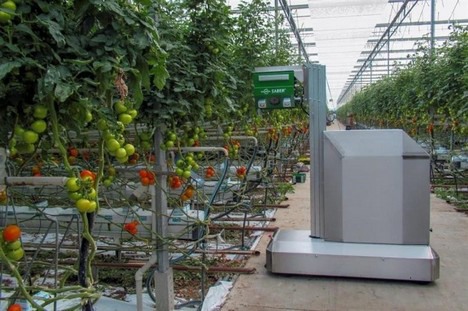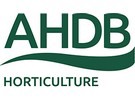As part of the SmartHort project to accelerate the uptake of automation and robotics in UK horticulture, AHDB spoke to Saber Miresmailli, Founder & CEO of Ecoation. They asked him about the current issues facing horticulture in Canada and how he sees data, artificial intelligence and automation changing production in the future.
What are the biggest challenges facing commercial horticulture in Canada?
Most greenhouses are expanding their operations and one of the challenges they are facing is labour shortages, but automation and technology can increase the efficiency of the workforce and help the industry. The other challenge is maintaining consistency and uniformity in larger operations. This requires more frequent data collection from larger areas to inform growers of changes and anomalies in the operations, so they can act before they face any impact.
How different do you think horticultural production systems could look in five years time?
Data-driven growing is taking a new turn and the advances in cloud and edge computing to bring data storage closer to the location where it is needed will enable more operations to use larger amounts of data to inform their decisions. Some growers and companies believe that artificial intelligence (AI) might replace human involvement, but we firmly believe that human input and judgment will remain an integral part of decision-making in horticulture. Machine learning and AI might help with certain tasks that are repetitive and require speed and consistency, but high-level decision-making and planning will still be done by humans.
To what extent are growers in Canada adopting new technologies?
If a technology demonstrates repeatable and reliable return on investment and clear benefits, most growers will adopt it. Horticulture has always been a progressive sector in agriculture. Technology adaptation is not the problem. Over-promising and under-delivering is the issue. Another limiting factor is the availability of the after-sales support. Complex technologies require close collaboration between the technology provider and the end user. The lack of such support can negatively affect the uptake of the technology.
How important is industry collaboration when developing new technologies and systems?
Industry collaboration is extremely important. We know of several solution providers who do not have a background or direct ties to the horticulture industry and their approach is purely from an engineering standpoint. Not knowing the customer, the operation or the industry can result in building a Lamborghini when a bicycle can do the job!
UK growers might not have heard about the IRIS Scout Robot that won the 2018 GreenTech Innovation Concept Award in the Netherlands. Can you please tell us about it?
IRIS ScoutRobot is the result of an international collaboration between Ecoation in Canada, and Micothon and Metazet in the Netherlands. The core concept of the technology is based on a simple principle; finding issues early will enable growers to resolve them more effectively, with lower cost and risk of spread. The fully autonomous row-shifting robot is equipped with various types of sensors and data collection technology. It can tell you about the health of the plant, yield assessment, the quality of crop work, granular microclimate for each square metre and even information about the status of the greenhouse infrastructure. The technology has capacity to not only scan the crops for issues but also fix the crop problems at spot using various attachments and control measures. A semi-autonomous version of the technology, OKO scoutrobot, has been deployed commercially in several greenhouses in North America and will soon hit the ground in Europe.

What has been your role in the development of the IRIS Scout Robot and what are your hopes for the technology going forward?
I invented the main sensor that was inspired by my research during my doctoral studies. Together with my co-founder, who is also my wife, we developed the technology that allows us to detect crop stress at early stages. In collaboration with our partners at Metazt and Micothon, we created a fully autonomous version of the technology that can work at day and night and can move rows on its own. This technology can provide a level of information for growers, never captured before, and it allows them to expand and extend their knowledge and presence to every square metre of their operation. I hope in the near future, the scout robot becomes an ordinary tool that everyone uses as part of the industry standard.
Data collection and data use is a hot topic in horticulture now. How valuable can data be to enhance production systems?
Not all data is valuable. Data on its own has no value. If a process or an algorithm turns data into intelligence that can be acted on, then it becomes valuable. The algorithm, however, must be designed by someone who knows how the industry works and what is possible. The right data that can turn into the right decision with an outcome that benefits the operation can be extremely valuable. A massive collection of information that cannot result in an action will not provide any value.
Do you think data is being used to its maximum value at the moment? If not, what could businesses do to try to make it more useful?
No, I believe we are just scratching the surface and the reason for that is over-simplification of the growing process by technology developers. I have seen countless technologies that reduce the art of growing into ‘we just give the plant water/fertiliser and adjust temperature and light and watch it go!’ It takes years for a grower to learn how to properly read the plant. This effort and knowledge must be respected and used in the design of the technology. Growing is a combination of art and science. Businesses that ignore the art won’t be able to produce a complete solution.
What advice would you give to a business looking to invest in new technologies?
My advice for growers is to get involved with the technology companies at early stages so they can shape and inform the efforts. The investment community has a favorable view of AgTech opportunities and a lot of resources have been and will be invested in developing tools for agriculture. The industry needs these tools to overcome the challenges of labour shortage, rapid outbreaks and maintaining consistency. You can either wait and let some companies guess what is best for your industry, or you can get involved first-hand and lead the effort, to make sure the outcome is something that can add value to your operation and help you in the long run. Be an early adapter. And be forgiving. Every hardware will eventually break, and every software will eventually work but it needs patience and persistence.
Ecoation, founded in 2010, is a plant- and grower-centric platform that merges deep biology, automation, sensing, artificial intelligence, intelligence augmentation, and robotics, to change the way we produce and protect our food.
Saber Miresmailli received his PhD in Plant Science from the University of British Columbia and conducted his post-doctoral studies at the University of Illinois at Urbana-Champaign. However, before he started his academic and business career, Saber first grew vegetables in open fields and then inside greenhouses. He still carries the very first pepper and tomato that he grew on his first farm everywhere he goes.
 AHDB
AHDB